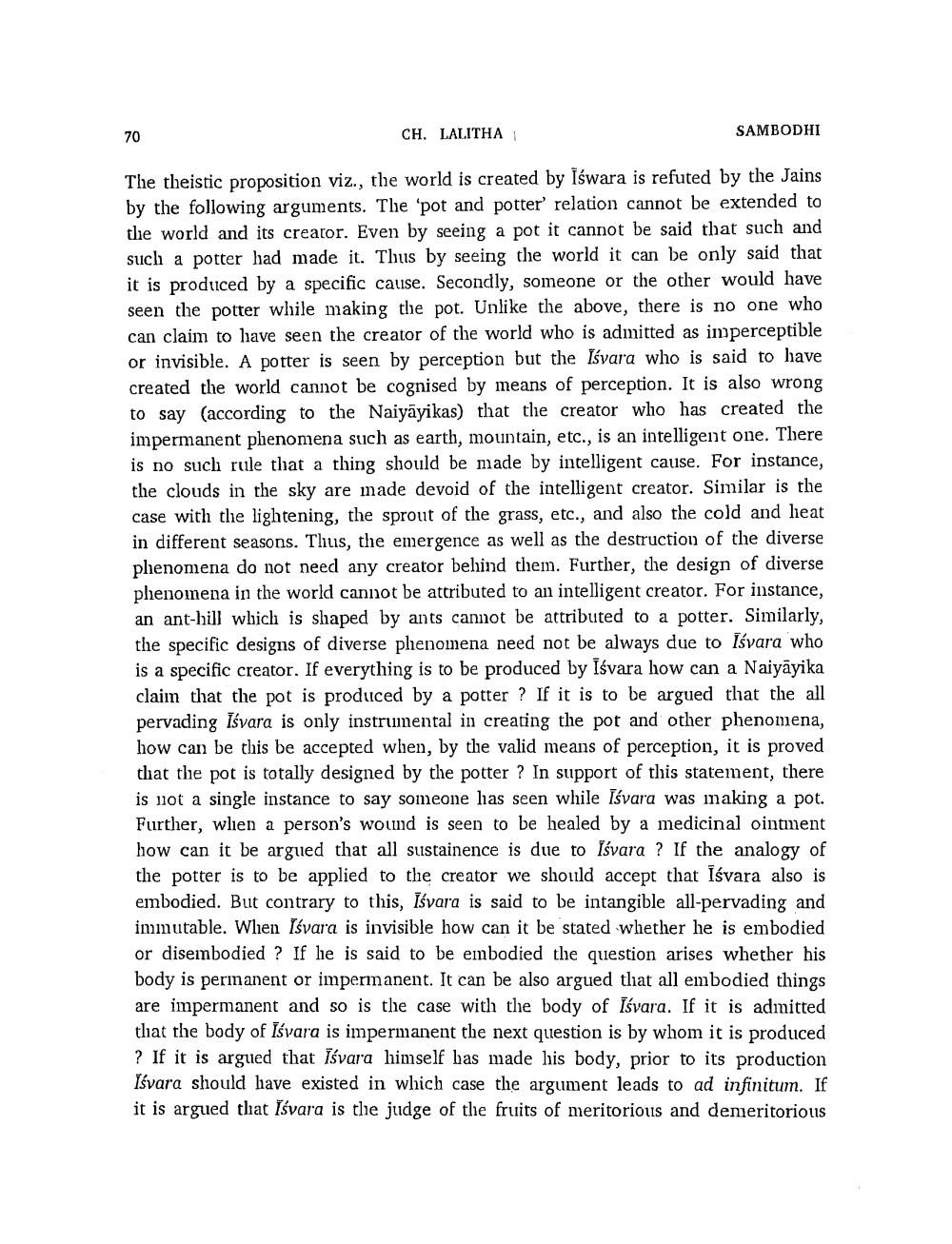________________
70
CH. LALITHA
SAMBODHI
The theistic proposition viz., the world is created by Iswara is refuted by the Jains by the following arguments. The 'pot and potter' relation cannot be extended to tlle world and its creator. Even by seeing a pot it cannot be said that such and such a potter had made it. Thus by seeing the world it can be only said that it is produced by a specific cause. Secondly, someone or the other would have seen the potter while making the pot. Unlike the above, there is no one who can claim to have seen the creator of the world who is admitted as imperceptible or invisible. A potter is seen by perception but the Isvara who is said to have created the world cannot be cognised by means of perception. It is also wrong to say (according to the Naiyāyikas) that the creator who has created the impermanent phenomena such as earth, mountain, etc., is an intelligent one. There is no such rule that a thing should be made by intelligent cause. For instance, the clouds in the sky are made devoid of the intelligent creator. Similar is the case with the lightening, the sprout of the grass, etc., and also the cold and lieat in different seasons. Thus, the emergence as well as the destruction of the diverse phenomena do not need any creator behind them. Further, the design of diverse phenomena in the world cannot be attributed to an intelligent creator. For instance, an ant-hill which is shaped by ants cannot be attributed to a potter. Similarly, the specific designs of diverse phenomena need not be always due to Isvara who is a specific creator. If everything is to be produced by Isvara how can a Naiyāyika claim that the pot is produced by a potter? If it is to be argued that the all pervading Iśvara is only instrumental in creating the pot and other phenomena, how can be this be accepted when, by the valid means of perception, it is proved that the pot is totally designed by the potter ? In support of this statement, there is 110t a single instance to say someone has seen while Iśvara was making a pot. Further, wlien a person's wound is seen to be healed by a medicinal ointment how can it be argued that all sustainence is due to iśvara ? If the analogy of the potter is to be applied to the creator we should accept that Iśvara also is embodied. But contrary to this, Išvara is said to be intangible all-pervading and immutable. Wlien Iśvara is invisible how can it be stated whether he is embodied or disembodied ? If lie is said to be embodied the question arises whether his body is permanent or imperinanent. It can be also argued that all embodied things are impermanent and so is the case with the body of īśvara. If it is admitted tliat the body of Iśvara is impermanent the next question is by whom it is produced ? If it is argued that īśvara himself has made liis body, prior to its production Isvara should have existed in which case the argument leads to ad infinitum. If it is argued that Iśvara is the judge of the fruits of meritorious and demeritorious




